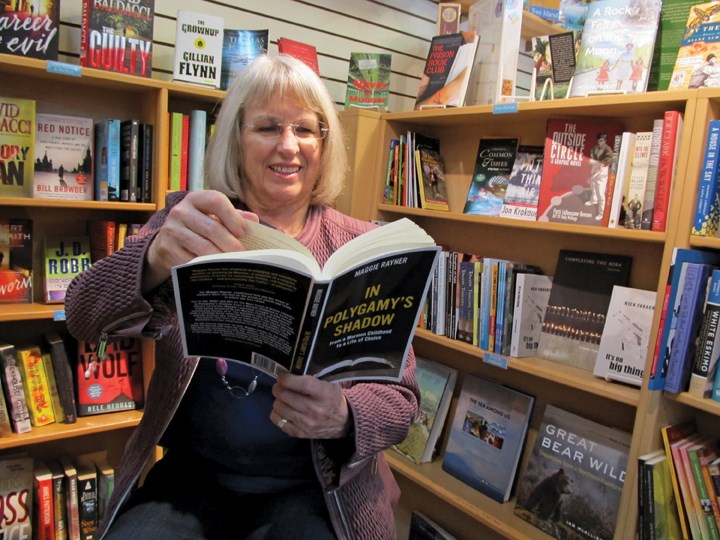Say the word polygamy and we think of Mormons. The contemporary Church of Jesus Christ of Latter-Day Saints (LDS) officially frowns on fundamentalist Mormons who still follow the practice of a man taking more than one wife. Yet it continues.
Maggie Rayner (a pen name) in her tell-all book In Polygamy’s Shadow: From a Mormon Child-hood to a Life of Choice (JKS Publishing) describes in explicit and harsh terms what it was like to grow up a Mormon during the 1950s and ’60s. Surprisingly, her devout church-going family were not raising the seven kids in the Mormon state of Utah, but in the quiet town of Gibsons.
Rayner, who now lives in Vancouver, returns to Gibsons on Wednesday, May 18 at 6 p.m. when she invites the public to hear her read from In Polygamy’s Shadow at the Gibsons Library.
The book that describes her childhood could equally be titled In Poverty’s Shadow, because Rayner vents her anger at the parents who gave their tithe to the church rather than use the money to feed their hungry children. In the early years before two of her brothers were born, the family lived in a shed with a leaky roof off Gower Point Road. It was a time in Gibsons when the local doctor made house calls and the ferry loaded at the government wharf. Rayner’s strict father beat her with his belt when she was five years old and she feared him all her life. Her devout mother insisted that the children go to Vancouver to the temple on Sundays where they sat through sermons. Even when the growing family moved to a larger, rundown home that overlooked Gibsons harbour, food was scarce, and for a time the children were forced to live in a dark, damp basement while the house was being renovated.
Though Rayner’s parents adhered faithfully to the church, they were not polygamists – in fact, Maggie’s mother was against the concept. That did not stop the fundamentalist church members from Bountiful, BC, from cruising the temples of the Lower Mainland to meet potential teenage brides.
This book is smoothly written and totally engrossing, but in reviewing it I thought it wise to have a former LDS church member also read it. Did the members really wear temple undergarments? Did they really fast – abstaining from food and water – one day a month? Would the family be reunited in the afterlife, as the church elders said? The author’s account of church secrets appears to be truthful.
All religions observe rituals, some of them bizarre in the eyes of non-believers, so it is not up to the reviewer to judge. I leave that task to Maggie Rayner to tell the reader how her life was before and after her gradual break with the church when she finally left her bullying father and sanctimonious mother behind to pursue her own path to happiness.
Read a preview at www.maggierayner.com or call librarian Heather Evans-Cullen at 604-886-2130 to register your attendance at the free library reading.



